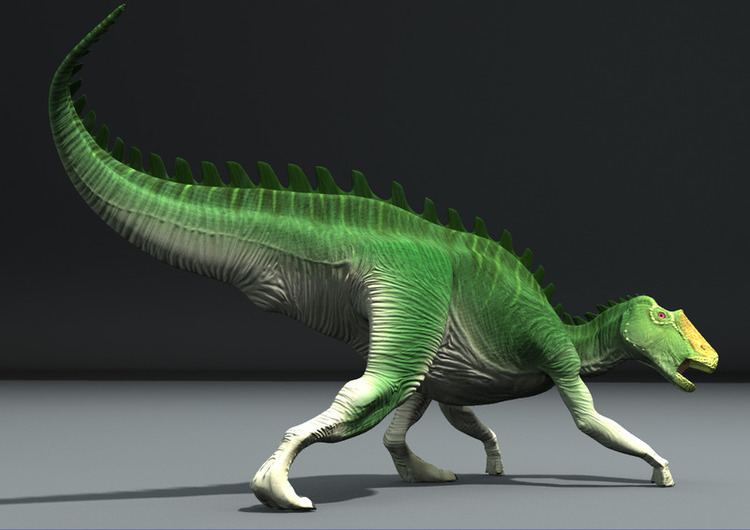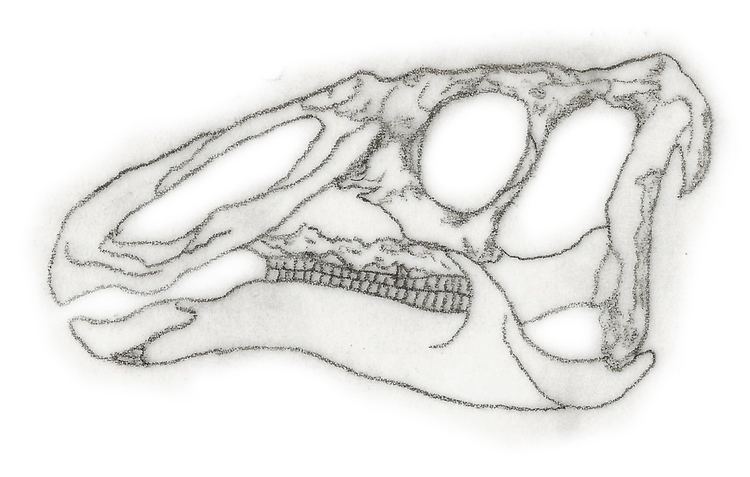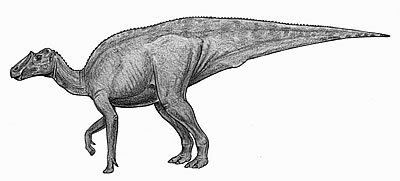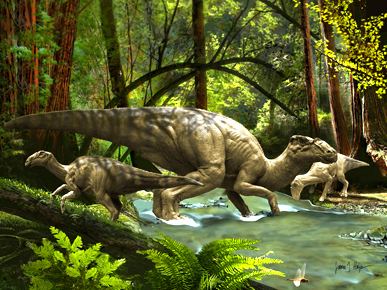Rank Species | Class Reptilia Suborder †Ornithopoda Phylum Chordata | |
 | ||
Genus †LophorhothonLangston, 1960 Similar Claosaurus, Prosaurolophus, Kritosaurus, Eolambia, Barsboldia | ||
Lophorhothon (Langston, 1960) is a genus of hadrosauroid dinosaur from the Late Cretaceous, the first genus of dinosaur discovered in Alabama, in the United States.
Contents

Discovery and namingEdit

Remains of this small, poorly known perhaps saurolophine dinosaur were first discovered during the 1940s, from extensive erosional outcrops of the lower unnamed member of the Mooreville Chalk Formation (Selma Group; lower and middle Campanian) in Dallas County, west of the town of Selma, Alabama. The taxon has since also been reported from Black Creek Formation (Campanian) of North Carolina. The holotype, which is housed in the collections of the Field Museum in Chicago, consists of a fragmentary and disarticulated skull and incomplete postcranial skeleton. The length on the holotype specimen has been estimated as 4.5 meters. The genus was named by Wann Langston in 1960. It was thought to be the only species of hadrosaur from that fossil formation, until 2016 with the discovery of the primitive hadrosaur, Eotrachodon orientalis. The name Lophorhothon means "crested nose" (Greek lophos meaning 'crested' and rhothon meaning 'nose'). The type species is Lophorhothon atopus. The specific name is derived from Greek atopos, "uncommon" or "strange".
Taxonomic statusEdit

Since the publication of Langston's description of Lophorhothon a number of workers have questioned the validity of this genus. It has been suggested, for example, that the material may actually represent a juvenile Prosaurolophus. James Lamb in 1998 has suggested the genus may actually represent a basal iguanodont, an idea that has failed to find widespread acceptance. More recent workers (Horner, Weishampel, and Forster, 2004) have classified Lophorhothon as a basal hadrosaurine and a sister taxon to all other hadrosaurines. An analysis published in 2010 indicated it was a basal member of the Hadrosauroidea.
HolotypeEdit

The specimen which Langston designated as the holotype was discovered by Rainier Zangerl, Bill Turnbull and Charles Barber on a Field Museum expedition in 1946 and was given catalogue number FMNH P 27383. It consists of less than one half of the skull, a number of vertebrae, and significant portions of the fore- and hindlimbs. Preserved cranial material includes a partial quadrate, left maxilla, teeth, jugal, lacrimal, nasal (with the namesake crest), postorbital, frontal, prefrontal, parietal, squamosal, and paroccipital process and a portion of the predentary bone. The specimen was likely washed out to sea by a river, where it eventually sank and was buried in the silty carbonate sediments of the Mississippi embayment.

